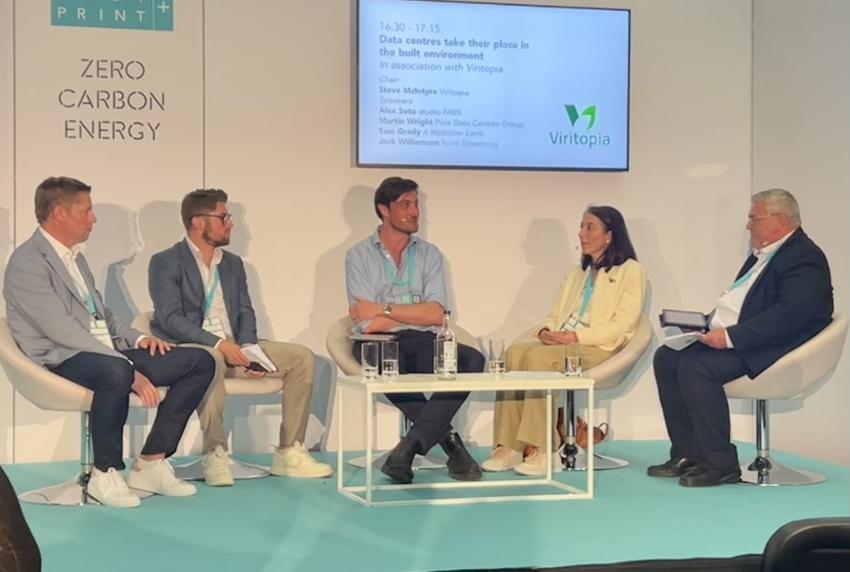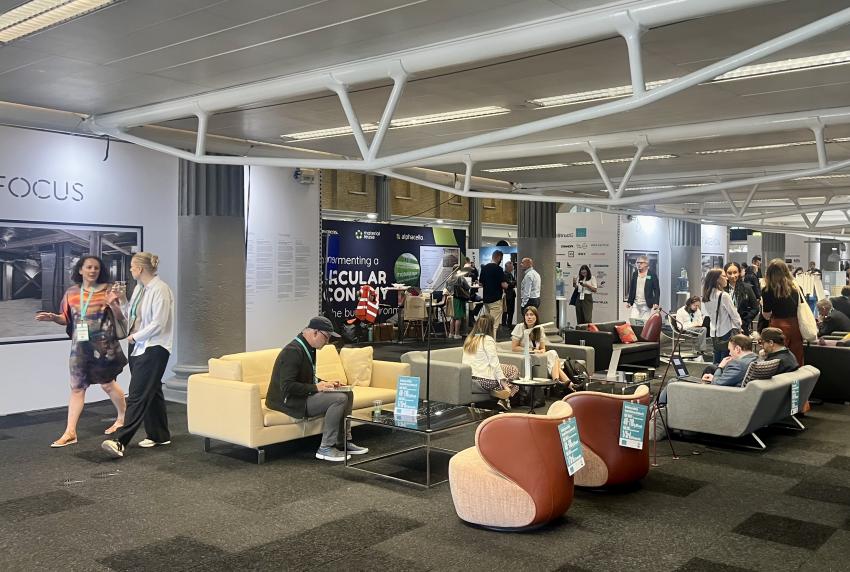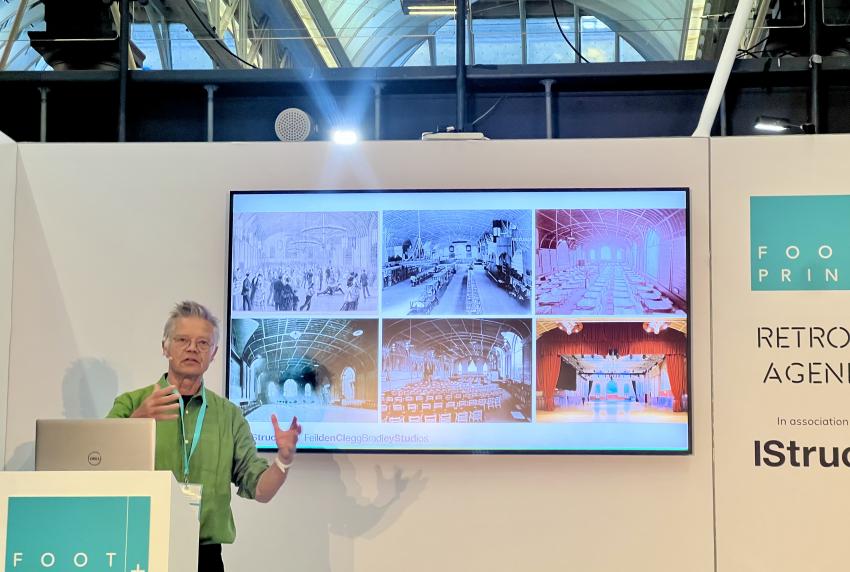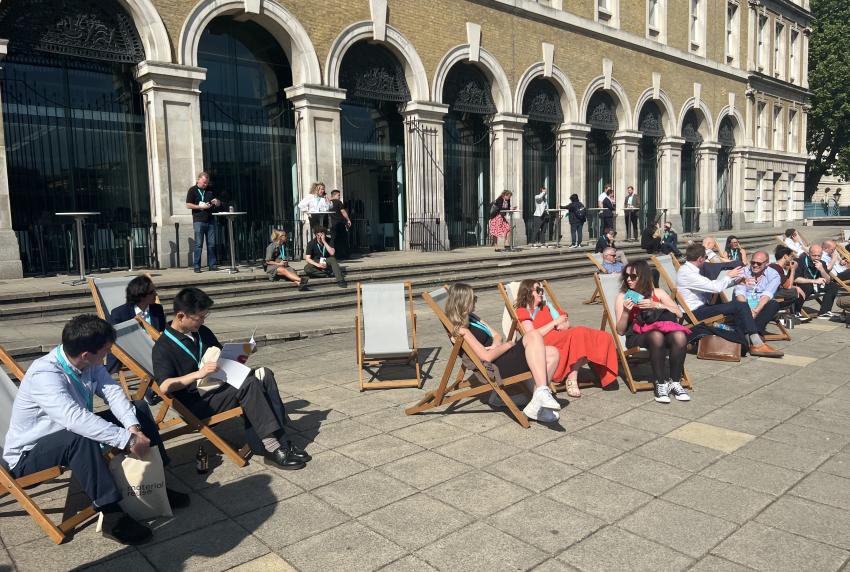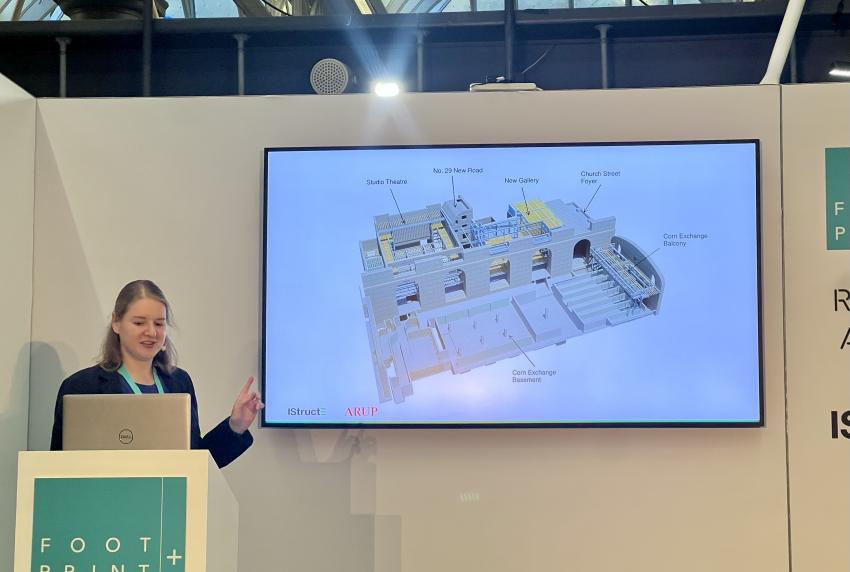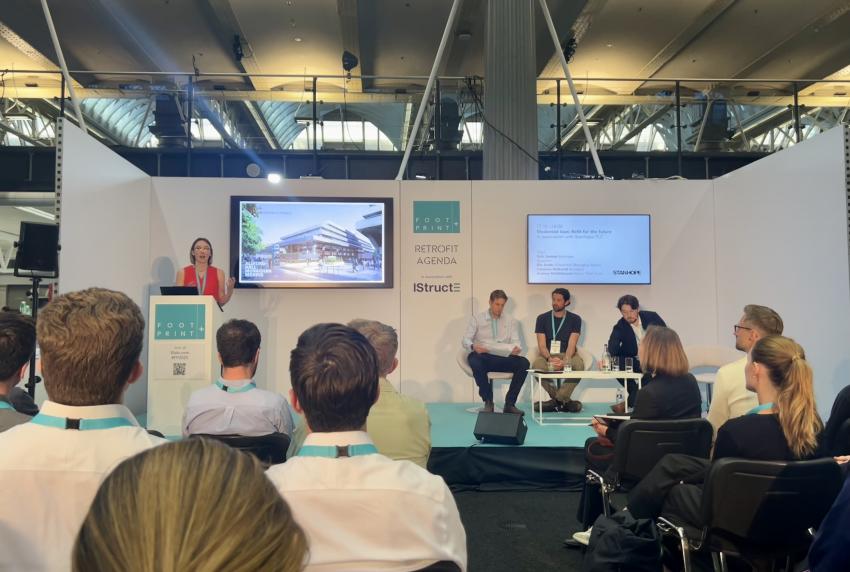Experts share knowledge for carbon reduction in the built environment
The UK property event for a zero carbon future, FOOTPRINT+, took place from 13-14th May at Old Billingsgate, London. Billed as a 'huge conversation where ideas and experience flow freely', this inspiring conference gives the people behind the latest advances in carbon reduction techniques for the built environment a chance to share their discoveries and knowledge. Over the years, since the beginning of FOOTPRINT+, we've seen the focus of this conversation develop and change. Topics discussed and questions raised at one conference are further examined and answered at the next event, with the wealth of data and practical experience in sustainability measures increasing over time as more projects reach completion. As usual, when attending, we focussed on discussions featuring speakers from Tenderstream member companies, and we're sure that we only scratched the surface of what was on offer at this informative event.
Heritage reimagined: transforming the Brighton Corn Exchange for a sustainable future
First up, we listened to a discussion about the transformation of the historic Brighton Corn Exchange, a Grade I-listed cultural hub in the city where Footprint+ began, and also incidentally close to Tenderstream HQ. Peter Clegg, founder of Tenderstream member FCBStudios, explained that the Corn Exchange was first built as an elaborate riding stable block for the Prince Regent, with its subsequent uses including a Victorian ice skating rink and a hospital for WWI soldiers. The challenge was to incorporate all the modern amenities of a contemporary theatre space, while respecting the original building to make it fit for another 200 years.
Among the original structure’s distinctive features is an 18-metre single-span timber frame, the widest example of its kind in the country. The beams were repaired and restored to their original designs from the early 1800s, and underwent strengthening to support a large stage lighting rig. The building’s uniqueness led to unique challenges, with some problems only uncovered as work began. Emily Duncombe, associate at Tenderstream member Arup, revealed the roof was discovered to have been damaged from years of overpainting, which had a big impact on the programme’s cost. Leslie Fair, partner at Jackson Coles LLP, observed that although certain aspects of the project’s delay were uncontrollable - including two contractors going bust, and covid restrictions - a two-stage tendering process might have made a difference to the project, as the contractor would have carried out more inspections and identified potential problems earlier.
Peter said that the project began10 years ago, before some of the sustainability measures expected now would have been specified. However, he thought that not much could have been done differently, given the constraints of the listed building, which meant ductwork could only be placed on the roof, for example. Overall, this impressive project had a sustainable result, opening up a heritage building in a way that allows for flexibility in its future use.
Embedding 'Just Transition' in public procurement: a case study
This session examined the practical ways in which Newham Council in London makes its purchasing decisions with certain core values in mind, namely the principles of social value, equity and sustainability. A brand new role at the council was in respons to the climate emergency, with Jacob Heitland appointed as director of climate action, and Dark Matter Labs engaged to look at ways to mitigate the effects of extreme heat. The challenge ahead is demonstrated by the fact that the borough has 17,000 social homes, requiring 1bn GBP to retrofit, out of a total council budget of 1.5bn GBP.
A climate action plan was developed in six months, with a central idea to improve lives by improving people’s homes and taking action to increase decarbonisation. Resilience is also an important aspect to consider, given that a household loses an average of 30,000 GBP following a flood.
Dan Hill from Dark Matter Labs stated that procurement is a significant part of the ‘boring revolution’ needed to adapt the bureaucracy necessary to accommodate action on decarbonisation. Jacob explained how the principle of equity comes into play when decisions are made to implement practical change. In discussions about introducing electric vehicle (EV) charging points, an opportunity was identified for a potential revenue-generating method for the council. However, it was important for the costs not to be made too expensive for those people living in flats, who are unable to use their own home’s electricity to charge an electric car.
Rebecca Chan, senior climate consultant at Tenderstream member Arup, said that moving forward, it would be important to measure how certain initiatives make a difference to people, in more than just broad terms. Are the same people benefitting from all projects, and are some groups being left out? What are the detailed demographics of those being helped? The answers could ensure that future procurement planning is more equitable.
Data centres take their place in the built environment
An entirely new typology has emerged in the built environment with the creation of data centres, and this timely panel discussion explored how sustainability is factored into their design. Known as energy-greedy facilities that generate a huge amount of heat, opportunities are now being explored to use that heat responsibility, while mitigating the amount of energy consumed.
Martin Wright, chief architect at Data Centres Group, explained how these new centres need a high degree of resilience - given how much human activity now takes place online - and have been declared as critical infrastructure by the UK government. Advances in technology such as the use of AI have increased demand, with clients wanting new facilities built quickly. Jack Williamson, associate architect at Tenderstream member Scott Brownrigg, noted that the simple, functional building needed for a data centre was easier to fit into the landscape in countries like the US, where there are more empty sites that can accommodate them. However, in countries with less land available, locations such as old distribution centres could be ideal for reuse.
There is a growing opportunity for data centres to produce energy for the surrounding area from heat generated during their operation, which would otherwise be wasted. In order for this to happen, they must be located at sites that can be connected to the electricity grid. Alex Soto, head of sustainability at Studio NWA, gave the example of a centre in Odense, which powers 7000 homes. In west London, the future development at Old Oak has been planned so a centre on the site will provide low carbon heat to 10,000 homes and a hospital.
This new energy-hungry typology has emerged at at time when sustainability is becoming an increasingly important part of the conversation about new developments. It is hoped that the tech giants behind most of the demand for these facilities continue to use their resources to develop ways to improve data centre design.
Modernist icon - refit for the future
We end the day where we began, hearing about an iconic building transformed for future use. This time, the discussion focussed on a modernist treasure. The IBM building, designed by Sir Denys Lasdun and completed in 1983, is currently undergoing a sensitive refurbishment and extension by developer Stanhope. The Grade II listed Brutalist building will be updated for contemporary office occupiers, to ensure it has a long term, energy-efficient future.
Ella Smith, building performance manager at Tenderstream member Allford Hall Monaghan Morris, explained how the IBM building shared the same architect as the National Theatre and became part of the South Bank cultural hub. Although looking to the future, the building was of its time, with a car ramp forming a central feature of its façade. This has been removed to create a colonnade flanked by a square, creating a new internal entrance space with a more civic feel. Energy efficiency has been improved by replacing a single glazed Crittal façade with an aluminium curtain system. Outside, underutilised terraces have been planted, resulting in a 200% net gain in biodiversity.
Andrew Middlebrook, associate director at Heyne Tillett Steel, explained how a key factor in the transformation was a detailed analysis of the building, made possible by examining the archives and studying construction photographs. Approvals were required to increase loads on the existing structure, and testing was conducted to ensure a 30% increase in load was possible.
Cameron McGeoch, sustainability engineer at Multiplex, emphasised the importance of engaging with subcontractors at every level of the supply chain, to ensure that everyone on the project had all the information they needed to get behind sustainability measures during all phases of the project.
Looking to the future
As a representative of Tenderstream, which specialises in providing data on business opportunities at the procurement stage, it was especially interesting to hear how a commitment to sustainability by public authorities is affecting their approach to purchasing. Certainly, we have seen tenders mention sustainability not only more frequently, but also in more detailed ways with an eye to specific targets.
The projects discussed at the conference reflected the ever-growing complexity of the built environment, with transformations of heritage buildings for future use, structures created in the last few decades now reaching a time for renewal, and the emergence of entirely new typologies such as data centres. It will be fascinating to see how the drive to decarbonise the built environment plays out across all these different sectors and at every level of project planning.
Lucy Nordberg
Tenderstream Head of Research
Start your free trial of our service here or email our team directly at customerservices@tenderstream.com
